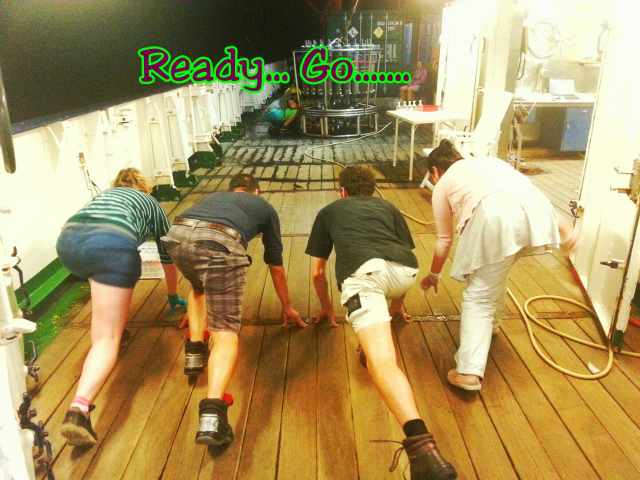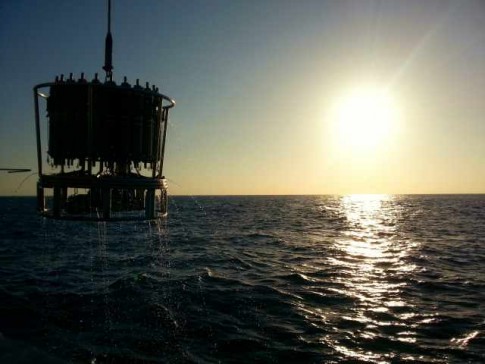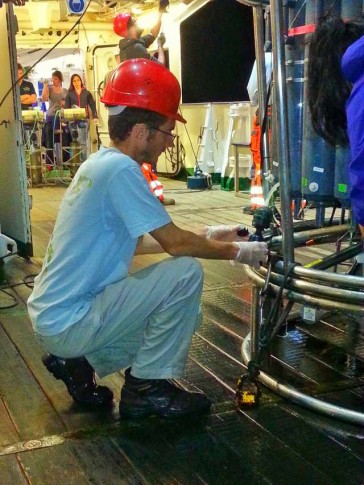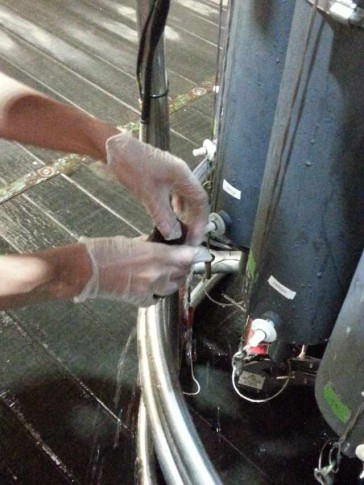After waiting 2 hours and 30 minutes for our CTD to descend to and return from 4000 m under the sea, everyone wants a drop or two of precious water from the deep ocean. Some want it fast and will run it to their laboratory for immediate analysis (Fe2+, H2O2), some will collect their samples on deck and look at them in the lab in a few hours (nutrients, chlorophyll a, radium, O2), some will incubate bottles for days on the ship to conduct experiments investigating nutrient cycling and others will fill bottles to ship back to their institutions (DIC, DOC, Nd) and occupy themselves with chemistry for months to come.
But we all want water now and it is a race. You snooze, you loose. There’s always someone who wants a few more litres and will be all too happy to take your allocation if you miss your window. The order is fixed. First oxygen, then small volume samples sensitive to gas exchange, then nutrients, then larger volume samples for isotopes and incubations.
With only one deep cast to the bottom of the sea at each station, there is no going back to get a little more when you sleep in. So no matter what the time of day, no matter what the weather or sea state there will always be a queue of scientists waiting to fill bottles of every size, shape and material with seawater.
Eat, sleep, collect seawater, repeat.
Why do we bother measuring so many things all the time? Well it is only by measuring many different variables at every depth, at every station across a long cruise that we get a holistic understanding of how the ocean works as an ecosystem and as a feature of Earth’s climate. So at every station we conduct the same analysis at as many depths as possible to collect complete water column profiles with which we can begin to understand how this part of the Ocean functions.



